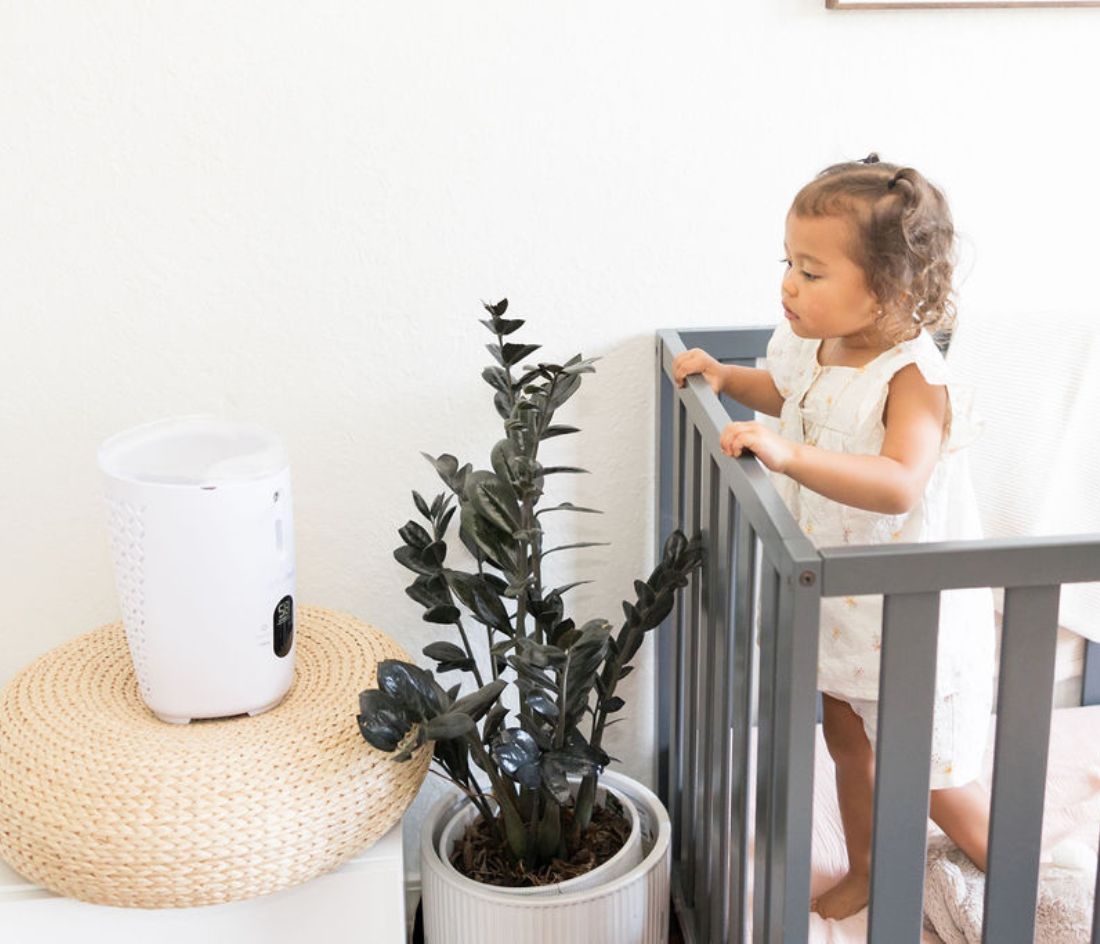Guest Post By Genevieve Kane, MSN, RN
As a new parent, it is common to watch your baby breathe and to enjoy watching them rest peacefully. Many parents also check on their baby before they go to bed or in the middle of the night to ensure they are still breathing and ok.
It is also common to analyze every tiny detail, wondering if your baby’s behavior is normal. If your baby is a noisy breather, it can be startling. Some babies make a lot of noise when they sleep, which can be normal.
However, for other babies, noisy breathing may have a medical cause. One common cause of noisy breathing in infants is the condition of laryngomalacia. Treatment for laryngomalacia varies depending on the severity of the condition.

What is Laryngomalacia
Laryngomalacia is the most common reason for noisy breathing in babies, according to Children’s Hospital of Philadelphia (CHOP). Laryngomalacia is a condition where tissues above the vocal cords are softer than they should be.
This softening causes floppier tissue around the voice box. The tissue then falls over the airway opening when an infant breathes, partially blocking it.
Symptoms of Laryngomalacia
While floppy tissue that can block off an infant’s airway sounds scary, the condition usually isn’t severe. For most children, the condition resolves when the child is a year old. The main symptom of laryngomalacia is a type of noisy breathing called stridor.
With stridor, the breathing is noisier when the baby inhales and has a high-pitched sound. Stridor may also be more noticeable when the infant cries, feeds, or lies on their back.
If a baby has laryngomalacia, noisy breathing typically occurs within the first few weeks of life. It is rare for older children or adults to develop laryngomalacia. The noisiness may increase over the first few months of life and improve significantly by the time the baby is a year old.
While most cases of laryngomalacia resolve on their own without intervention, it is crucial to address any breathing concerns with your child’s healthcare provider and avoid self-diagnosing.
Occasionally, laryngomalacia can be a more severe condition. Symptoms that may require treatment for laryngomalacia include:
- Irritability
- Difficulty feeding
- Poor weight gain or weight loss
- Difficulty breathing, such as skin pulling in at the collar bone and between or under the ribs
- Pauses in breathing
This list is not exhaustive. If you are ever concerned about your child’s breathing, it is vital to seek medical care.

Diagnosing Laryngomalacia
Diagnosis of laryngomalacia can be done through a history and physical examination. If a provider needs further workup to diagnose laryngomalacia, a laryngoscopy or nasopharyngoscopy may be done.
A laryngoscopy or nasopharyngoscopy is a procedure that can be done in a healthcare provider’s office. During the procedure, a healthcare provider places a thin tube with a camera through the individual’s nose to look at the voice box and vocal cords. It allows the provider to see how the vocal cords move and if laryngomalacia is present.
However, it does not allow any visualization of the respiratory tract below the larynx (voice box). So, if there are additional breathing concerns, further testing may be needed. A procedure called a laryngoscopy and bronchoscopy may be done to help evaluate breathing concerns.
A laryngoscopy and bronchoscopy allow the healthcare provider to see the larynx, trachea, and bronchi — the trachea and bronchi are part of the lower respiratory tract.
Occasionally, other imaging may be necessary to reach a complete diagnosis. For example, a provider may order imaging such as an X-ray or CT scan. Depending on the main concerns, they may also want additional imaging that allows them to see what happens when a child swallows or the entire respiratory tract.
How is Laryngomalacia Treated?
Fortunately, the majority of babies with laryngomalacia will not need any intervention. Laryngomalacia treatment typically focuses on a wait-and-see approach as long as the baby can eat and grow normally.
If gastroesophageal reflux disease (GERD) is present, your provider may prescribe your infant medication to help with reflux. Your provider may prescribe this medication because reflux can worsen the symptoms of laryngomalacia. So, treating GERD may also be part of the treatment for laryngomalacia.
The condition resolves 80-90% of the time before the infant reaches 18-20 months old. However, if the condition does not resolve on its own or is severe, treatment of laryngomalacia may involve a surgical procedure called a supraglottoplasty.
A supraglottoplasty is a surgical procedure done through the mouth. During the procedure, the healthcare provider can remove tissue obstructing the larynx. This treatment for laryngomalacia allows children with severe cases to eat and breathe more easily.
A specialized doctor called an ears, nose, and throat doctor (ENT) performs supraglottoplasty. ENT is the type of doctor Steven Goudy, MD, founder of the NozeBot, is. Dr. Goudy is passionate about helping kids breathe more easily and providing education and resources to parents about conditions that affect breathing.

Looking for more tips on breathing and babies? You’ll find these helpful:
- Baby Breathing Basics - FREE eBook for Parents!
- Month Two: The Importance of Newborn Baby Tummy Time on Your Infant's Breathing
- What Parents Need to Know About Breath-Holding Spells
- Why Most Babies Can’t Breathe Through Their Mouth
- What Parents Need to Know About Preemies and Respiratory Issues
Key Takeaways
Noisy breathing in an infant is scary! If your child seems to be struggling to breathe, it is essential to seek immediate medical attention. And if you notice any new breathing patterns in your infant, contact a medical provider for advice.
However, in many cases, the noisy breathing can be attributed to laryngomalacia. Treatment of laryngomalacia often involves simply waiting to see if the condition resolves on its own within a year or two, along with medications for reflux as needed.
However, if the condition's symptoms are severe and the child is struggling to eat or breathe, treatment for laryngomalacia may include surgical intervention.
Genevieve Kane, MSN, RN, is a mother of four and a registered nurse with a background in pediatrics. When she's not working, you can find her cooking up tasty family dinners or keeping up with her kids on a hiking trail in her home state of Colorado.
The Nozebot is a battery-powered suction device designed to clear nasal congestion in babies and children.



